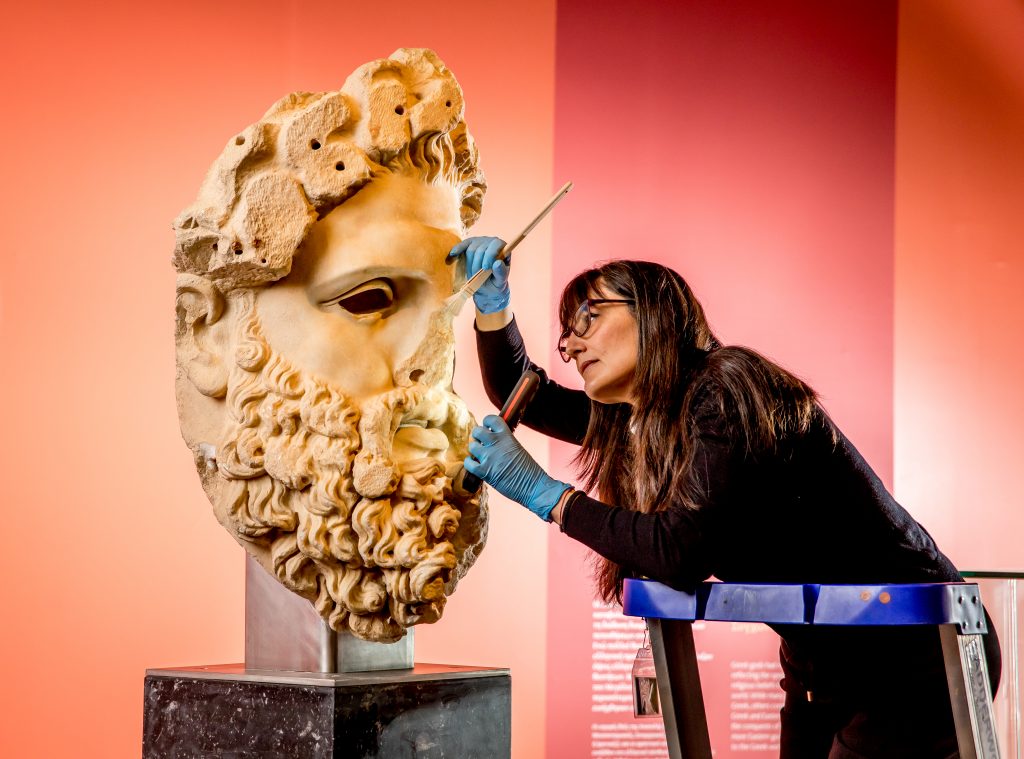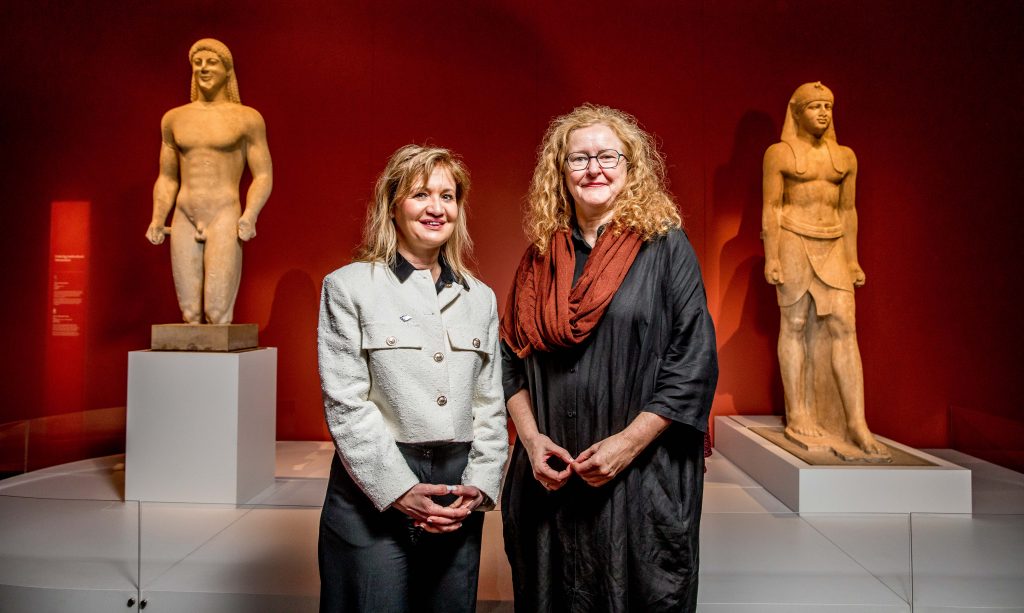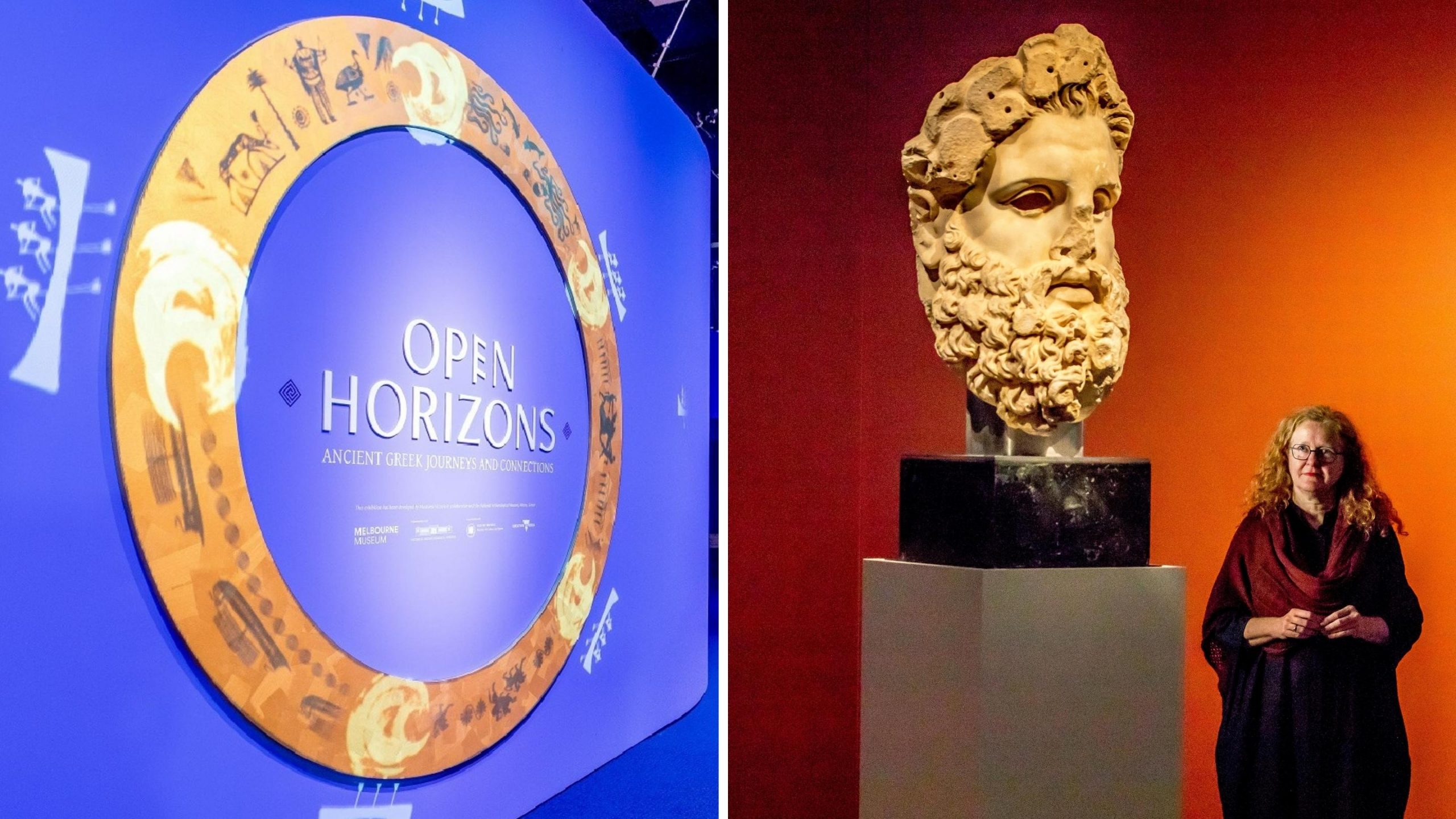More than 40 ancient Greek sculptures, bronze and other precious items — many on display for the very first time outside of Greece- are on show at Melbourne Museum’s Open Horizons exhibition, highlighting themes of culture and connection.
The exhibition, a creative partnership between Melbourne Museum and the National Archaeological Museum, was scheduled for last year to coincide with the 200th anniversary of the Greek War of Independence, but COVID saw those plans scrapped.

Now that it’s open, the organisers are hopeful that by looking to the past, people can have a better understanding of the present by exploring how the trade of ideas and goods influenced Greek culture, and how they in turn influenced the ancient world
“There’s a lot of connection that can be found between people, whether that’s 50 years ago, or whether that’s 3,000 years ago,” Museums Victoria director of exhibitions and audience experiences Linda Sproul said, before she went on to answer The Greek Herald’s five questions.
TGH: How is the exhibition going and what is the feedback you get from visitors?
The exhibition has been warmly received by the local Greek community and our general Melbourne Museum visitors, as have the special programs we have presented as part of the Open Horizons exhibition.
We recently collaborated with the Greek Community of Melbourne to present the family weekend on 28/29 May. Over 9,000 people visited Melbourne Museum that weekend – the wonderful Ancient Greek Hoplitikons roamed the museum and musicians from Anagennisi and dancers performed in the main foyer which created a truly special event.
We have also collaborated with the Hellenic Museum and La Trobe University to present the Connected Worlds lecture series.

TGH: You are an advocate on how museums should not be considered ‘dusty places’ but a living space where people start conversations and explore. How do you achieve that in a world where people cope with millions of stimuli especially due to technological advancements?
Museums are public spaces where people can come together to explore ideas and objects they are already interested in or to discover and be delighted by new things – my favourite moment is when I hear a visitor say “Wow – I didn’t know that”.
These personal responses and social connections need to be supported by museum’s carefully considering how to engage and support audience needs and interests.
We try and achieve this in many ways – by collaborating with community, researching topics, evaluating our exhibition projects with audiences. An example of this is when we developed the Pauline Gandel Children’s Gallery – we consulted with 500 children to test our ideas and designs with our key audience group!
Lastly humans are social beings and in our busy world museums are an opportunity for families and friends to connect, share experiences and build memories that deepen their bonds with one another. And the last secret ingredient is beautiful design, interactive spaces, amazing objects, great stories and welcoming staff.
TGH: In what way does ‘Open Horizons’ relate to the society we live in? How important is cultural exchange?
Our initial discussions with the National Archaeological Museum Athens revealed that both organisations wanted to create an exhibition that was meaningful to the local Greek diaspora and all Victorians.
The exhibition title Open Horizons: Ancient Greek Journeys and Connections reveals the key concepts that provide the conceptual core of how the exhibition relates to the contemporary society we live in.
Victoria is home to one of the most culturally diverse societies in the world and Melbourne is known as the third largest Greek city in the world – both within Greece and locally. Open Horizons is truly unique in that the National Archaeological Museum has selected a range of objects where we can understand better the diversity of the Ancient Greek world and how the exchange of ideas, goods and gods strengthened and expanded culture.
This approach in turn allows audiences to make connections with Ancient societies, remember our family histories, reflect on our contemporary community life in Melbourne today and feel part of the story of the world.
TGH: Melbourne Museum has designed a program full of family-friendly activities for the duration of the exhibition. Why is it important for the young generation to learn about history?
At its simplest level history is the ability to recognise change over time and how this has positively and negatively impacted societies, communities and individuals.
Museum programs facilitate opportunities for conversation and sharing of memories and connections eg engaging with an expert as they share their academic knowledge; family members sharing intergenerational experiences of growing up.
These experiences and conversations support the ability of individuals to recognise shared histories, understand difference and develop empathy – key skills for personal wellbeing and cohesive societies.

The Greek Herald: Which of the 44 objects are your three favourite ones and why?
There are several “superstar” objects in the exhibition eg the Archaic Sphinx, Colossal Head of Zeus which are amazing and have never travelled outside of Greece.
Three favourites I have selected reflect my stories of personal connection. My first favourite is the Cycladic figurine which is at the beginning of the exhibition. Over 4,300 years old it’s clean lines and beauty clearly embody the inspiration these figures provided for 20th century artists sculptors such as Brancusi and Modigliani.
It also embodies the importance of the repatriation of cultural artefacts and highlights the role of National Archaeological Museum curators in researching and gathering evidence for the return of this object to Athens in 2014. Dr Anna Karapanagiotou presented a lecture at the Greek Community of Melbourne on this topic which is available online.
The second favourite are two necklaces over 3,300 years old. The necklaces are made from materials traded from Egypt (amethyst and faience) and where found in Thessaly, central Greece and Argolid in eastern Peloponnese. Small quiet everyday objects with a big story to tell of trade and shipping networks.
My third object is also a favourite of Dr Anna Karapangiotou, NAM Director – it was the focus of her doctoral research. The marble Grave stele of Alexandra is over 2,000 years old and depicts a young woman wearing the dress of the Egyptian goddess Isis.
Every time I look at this majestic artefact it reveals some new detail which takes my breath away – the sleeve of her undergown, the situla she holds in her left hand, the length of her fingers, the long-fringed knot at her chest. I can’t conceive of the skill required to achieve such details in marble!
READ MORE: Ancient Greek statues ‘speak’ of migration and multiculturalism
* Open Horizons runs from 23 April–14 August. For more information on the program, and tickets visit museumsvictoria.com.au/open-horizons

